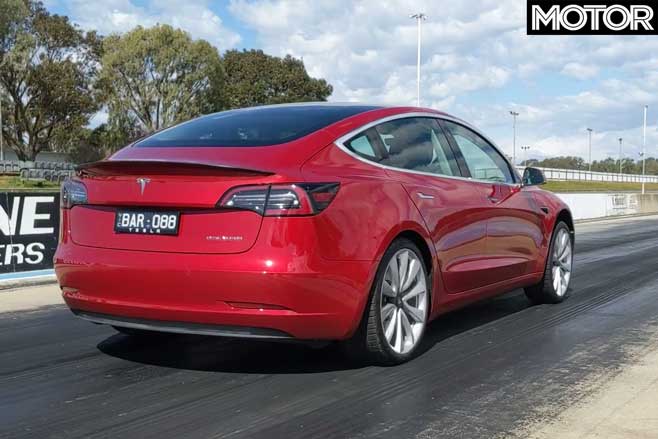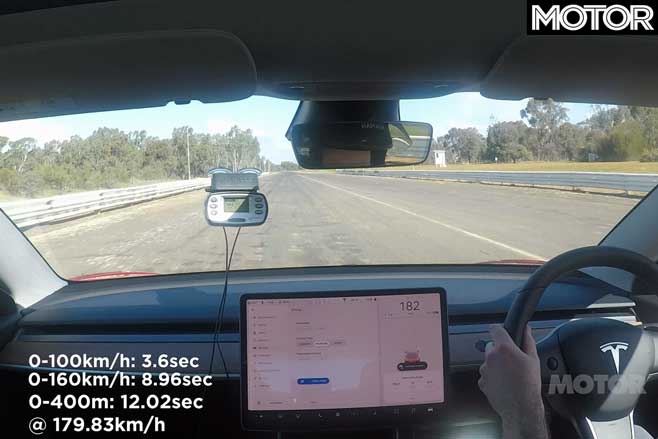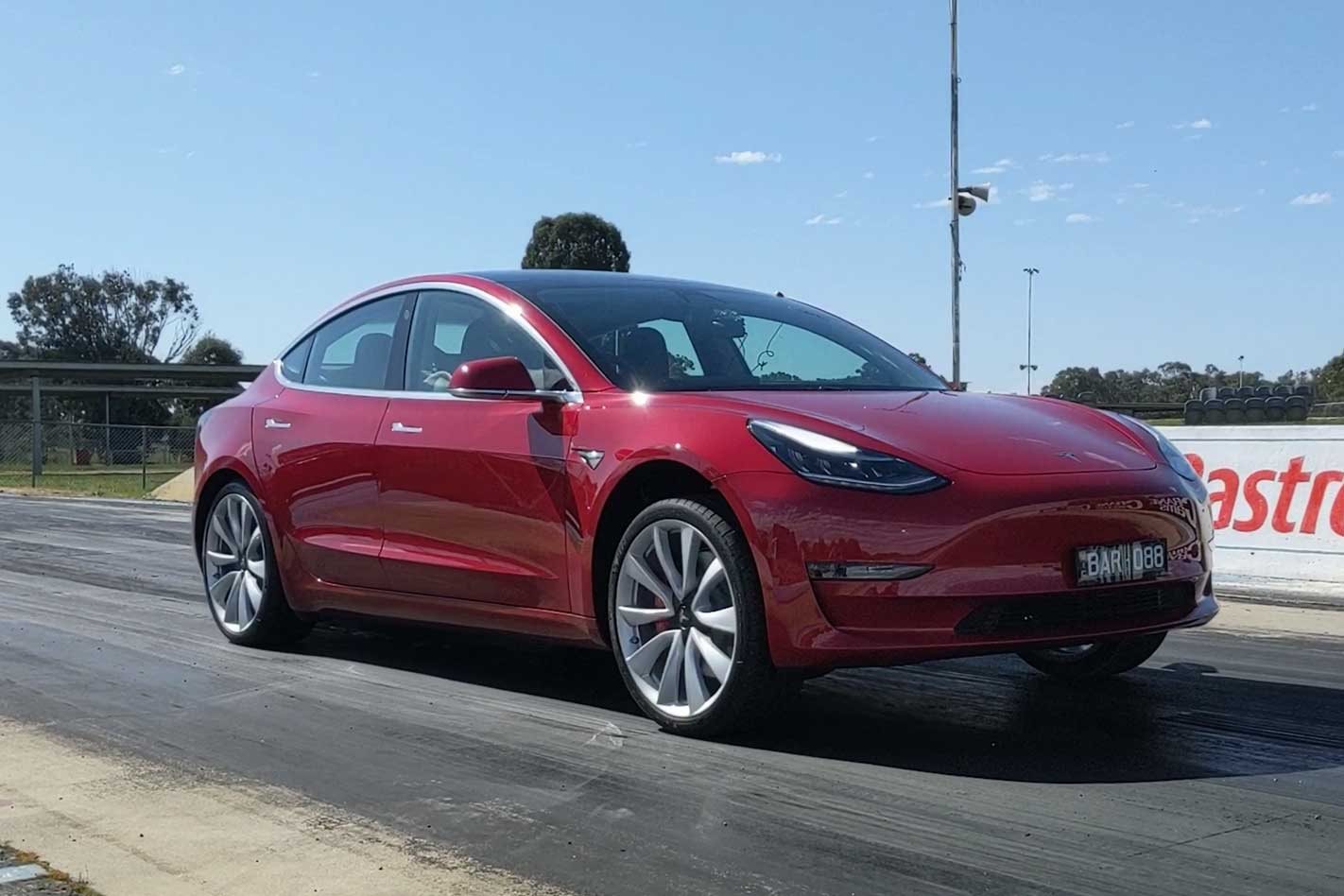Tesla has made its name by taking full advantage of the instant and brutal acceleration of electric motors, its range of sedans and SUVs often offering supercar-slaying performance.
As such, the most common question from punters when testing a Tesla is ‘how fast is it?’. During our first Australian test of the new Model 3 Performance, we certainly weren’t going to pass up an opportunity to run it down the Heathcote hotmix.

Until now, performance testing electric cars has been a nightmare. The last time we did so was with a Tesla Model S P100D in 2016, which provided the conundrum of needing as much charge as possible to give its best performance, tricky when Heathcote is a two-hour drive north of Melbourne.
Thankfully, the Model 3 Performance avoids such issues. Not only does it benefit from a far superior charging network to that which existed three years ago, but selecting Track Mode turns on the fans to regulate the battery temperature and ensure the full 353kW/639Nm are available.
There is no skill to performance testing a Model 3 Performance, or indeed any all-wheel drive electric car. Maximum torque from zero rpm means there’s no benefit to spooling the car up (and the Model 3 Performance simply beeps at you if you try), just mash the throttle from rest and let it do its thing.
The off-the-line surge is immense, forcing you back into your seat. It matches the likes of the Audi RS3 and Mercedes-AMG A45 to 50km/h, but then surges ahead as these ‘old-school’ hot hatches select second gear.
Hitting 100km/h takes just 3.6sec (0.2sec slower than its claim but still very impressive) but from there the acceleration starts to slow. Completing the quarter mile takes only 12.02sec but the terminal speed is just 179.83km/h, a number more commonly associated with cars running low-13s rather than knocking on the door of 11s.
A comparison with a couple of similarly speedy machines proves just how different the power delivery of electric motors is. We clocked the current Porsche 718 Cayman S at an identical 12.02sec over the quarter mile, but its trap speed was 189.12km/h.

An Audi TT RS is neck-and-neck with the Model 3 Performance at 100km/h (3.59sec) but stretches away from there, completing the quarter in 11.75sec at 191.89km/h.
The biggest difference, however, is that these two examples use highly effective launch control systems to achieve these times. In the real world, by the time their drivetrains have engaged the Tesla will be long gone – it makes even the sharpest internal combustion engine feel lazy.





